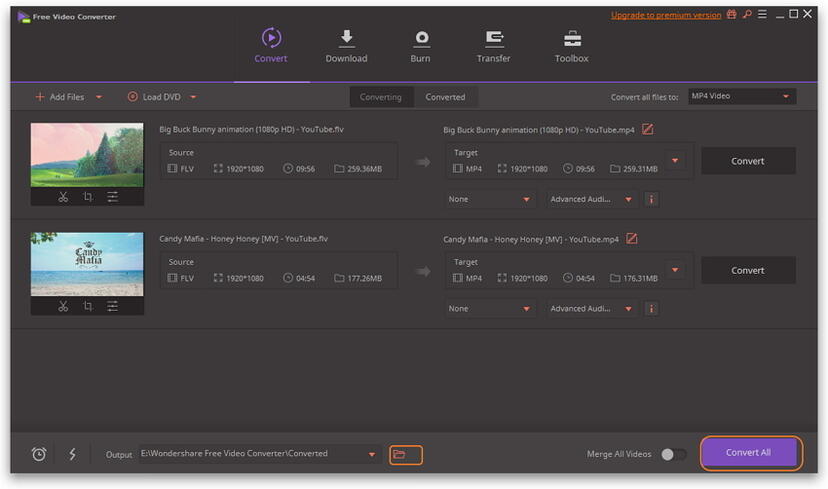
- Best settings fro mpeg streamclip for final cut pro 1080p#
- Best settings fro mpeg streamclip for final cut pro software#
I won’t go into much background on aspect ratio and all the standard ratios used today, because most of the time footage is shot and delivered in 16:9 - but I will say that the aspect ratio not only affects the aesthetic, but the feel of a video, as well. *Dropped frames can look like a sudden jump or lag at an edit point, so watch your video thoroughly and see anything catches your eye. If you haven’t conformed them, watch out for anything looking off. The clips will be adjusted by dropping, adding, and/or blending frames together to make them fit together in the sequence. Anything that is different from your sequence will be adjusted (so long as you click “Keep Existing Settings”), whether it’s a 3:2 pulldown or another really technical thing I can’t really explain. Once you’ve picked your frame rate, start importing your footage. Here’s a trailer for the latest Fast and Furious at 24p: It’s actually fairly rare to see a sequence or video that is playing back at anything over 30 fps, so give it some thought when you’re picking your frame rate (because it does matter). Most feature films are 24 fps and have been for decades most web video is 30 fps and the Hobbit movies (48 fps) and a few other ambitious examples have been shown at higher frame rates, but haven’t been received all that well.

All frame rates have their drawbacks and benefits, but the differences in the look of the video are pretty noticeable even to untrained eyes, so keep that in mind when making your project. In editing, however, you hardly see anything over 60 fps. Once you start importing other clips, keep an eye on the program window to make sure nothing looks off and that there aren’t black bars or a cropped image (more on fixing those later).Īs I said earlier, Premiere will ask if you want to keep the existing settings or change them to match the new clip (only if it’s different than your current sequence), so click “Keep Existing Settings” if you want to keep the sequence the same and adjust the new clip around it.įirst a little background on frame rates: Options for your frame rate while shooting include (but aren’t limited to): 23.976, 23.98, 24, 25 (PAL), 29.97, 30, 48, 50 (PAL), 59.97, 60, 96, 120, 240, etc. You’ll want to choose a file that best illustrates the settings you’re going for. Usually, you can create a sequence from a single clip, so keep that clip’s settings in mind if you go this route, because it may not be the same as the rest of your files. Your sequence’s settings will determine how your project looks and how the added media will react, so you need to decide what your piece’s final look will be when you create your sequence. As long as you’re aware that it may look different when you export, or if that’s a certain look you’re going for, then you’re fine just editing as is. Or maybe you’ve got a bunch of clips that are 29.97 fps and a few that are 60 fps.
Best settings fro mpeg streamclip for final cut pro 1080p#
You may want everything to be in the same frame rate, but you may not care that you have a UHD clip or two in there among a 1080p sequence. The last thing I’ll say in this section is that there are a LOT of ways you can go just in this initial stage. They definitely are constantly working on this function, but just be mindful that you may have issues with too many different files. However, if you have a lot of different files in there, it can cause some lag and, in severe cases, can cause the program to crash.


Then you simply export out the settings you want and it will make everything conform automatically. Premiere, for instance, will let you add multiple file types, frame rates, and aspect ratios all in the same sequence (it will even ask if you want to change the settings to match the clip, but you’ll want to select “Keep Existing Settings”).
Best settings fro mpeg streamclip for final cut pro software#
I recommend conforming your media beforehand, as well, especially for things like demo reels or documentaries - but if you don’t care to do it before, you can use your editing software if it allows it.

You can use any video-conversion software (I use MPEG Streamclip for nearly everything), or you can do a batch export from AE, Premiere, or Final Cut and get everything to match perfectly (excluding vertical, 3D, and VR video, of course). In my experience, I’ve almost always converted everything beforehand to identical settings so that I won’t have to worry about any aberrations in my footage, or any performance issues from my editing software. The first thing you need to figure out is if you actually want to have everything match within your edited sequence (frame rate, resolution, codec, etc).


 0 kommentar(er)
0 kommentar(er)
